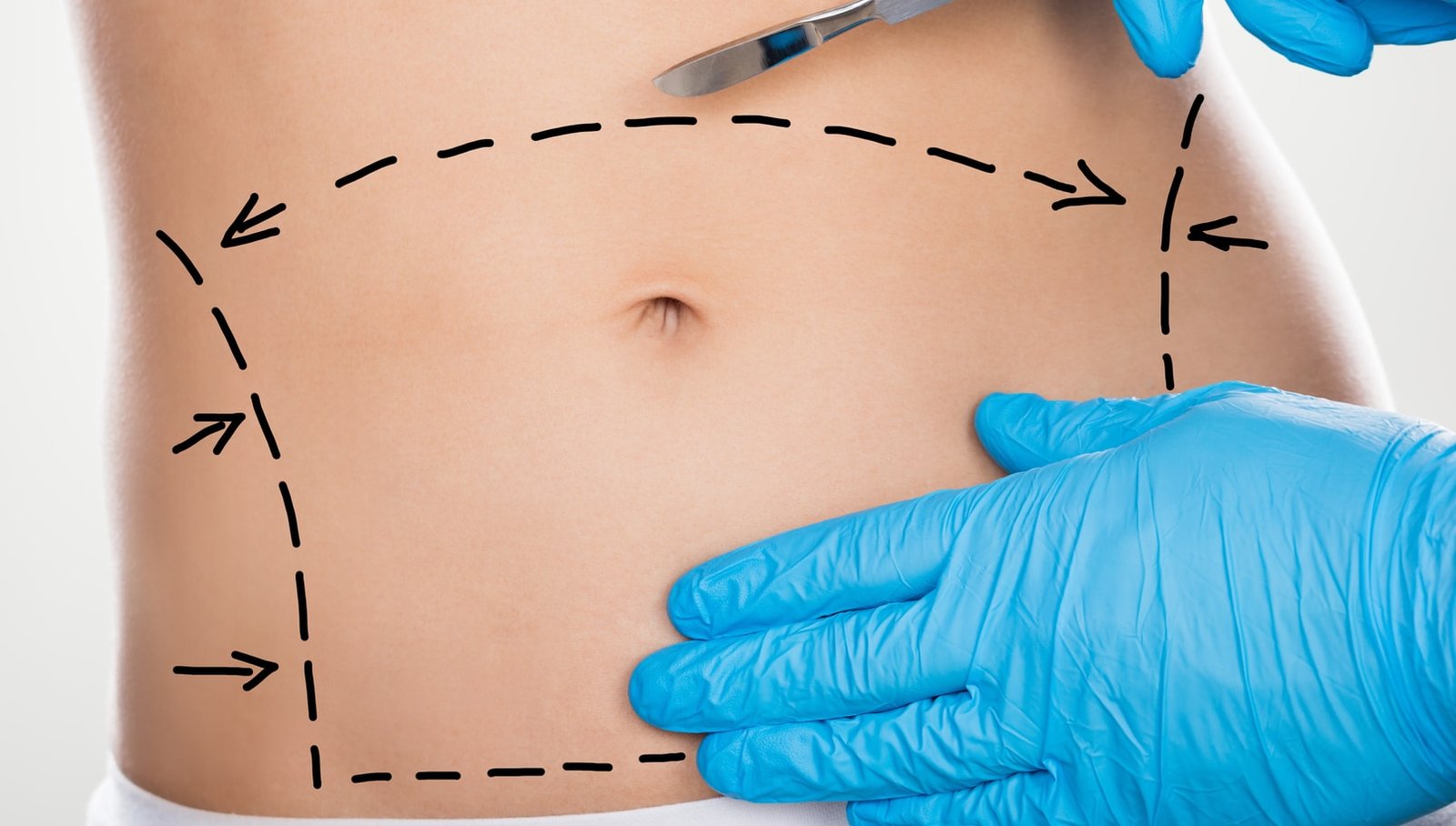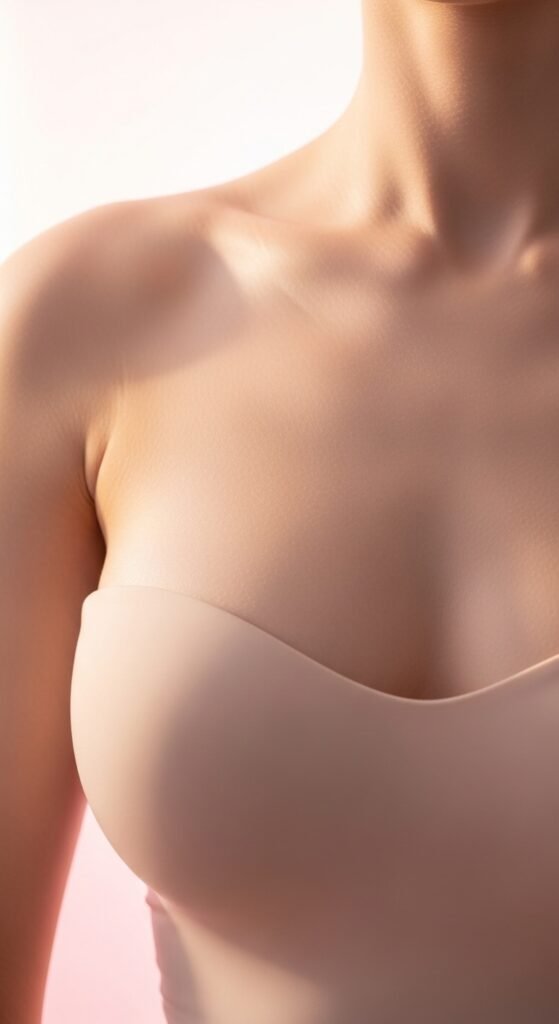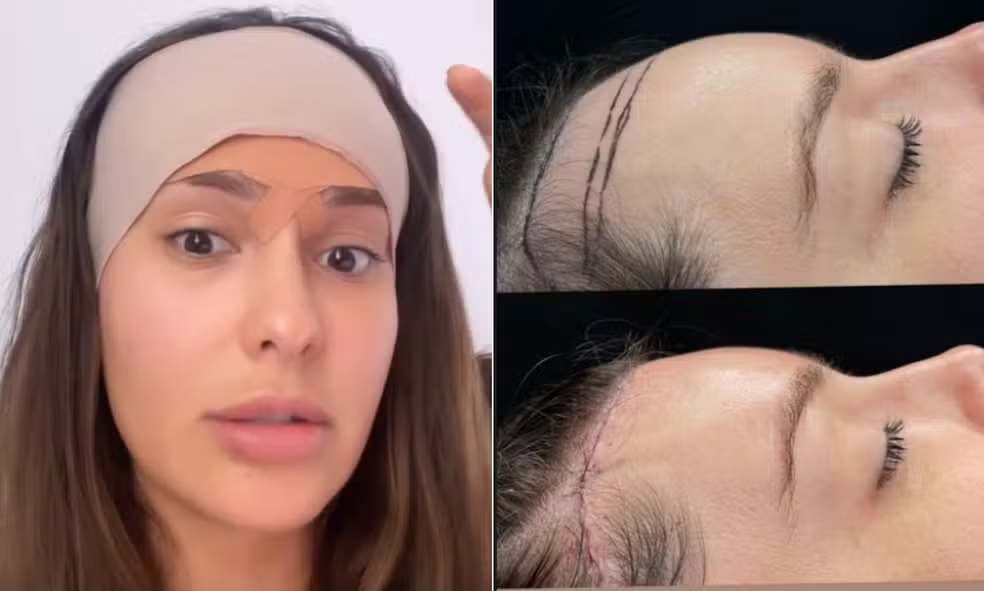Reverse Abdominoplasty: When It’s Indicated and What Results to Expect
The search for a firm, well-contoured abdomen is one of the main reasons patients seek plastic surgery. Among the many available techniques, reverse abdominoplasty — also known as reverse tummy tuck — is a procedure indicated in specific cases, especially when the skin laxity is concentrated in the upper abdomen.
In this article, you’ll learn what reverse abdominoplasty is, when it’s indicated, how it’s performed, and what kind of results you can expect.
What Is Reverse Abdominoplasty?
Reverse abdominoplasty is a surgical procedure designed to correct loose skin in the upper portion of the abdomen, above the navel.
Unlike the traditional abdominoplasty — where the skin is pulled downward and the scar is hidden along the pubic line — in the reverse technique, the traction is upward, and the incision is made just below the breasts, along the inframammary fold.
This approach allows the surgeon to remove excess skin and tighten the upper abdominal wall, restoring a smooth and firm contour.
When Is Reverse Abdominoplasty Indicated?
This surgery has more specific indications and should always be evaluated by an experienced plastic surgeon.
There are three common situations where the reverse tummy tuck is especially useful:
1. Skin laxity after a previous abdominoplasty
Patients who underwent a traditional abdominoplasty years ago may develop skin looseness only in the upper abdomen over time.
In these cases, there’s no need to repeat the entire surgery — the reverse abdominoplasty targets only the area of concern, restoring firmness without altering the navel or original scar.
2. Incomplete result after mini abdominoplasty
Sometimes, patients who have had a mini tummy tuck (focused only on the area below the navel) notice that the upper abdomen remains loose.
The reverse technique complements the previous result, tightening the upper part of the abdomen and creating a balanced, natural contour.
3. Residual flaccidity after liposuction
Patients who underwent liposuction with modern technologies (such as laser or ultrasound-assisted lipo) may experience residual skin laxity or fibrosis if the skin doesn’t retract properly.
In such cases, a reverse abdominoplasty can be performed to remove the excess skin and smooth the surface for a firmer, more uniform appearance.
How Is the Surgery Performed?
Reverse abdominoplasty is usually performed under general anesthesia or epidural with sedation.
The surgeon makes a discreet incision along the inframammary fold, which hides the scar naturally — especially for patients who already have or plan to have breast implants.
The skin of the upper abdomen is lifted, and if necessary, the rectus muscles are tightened (muscle plication) to reinforce abdominal tone.
Then, the excess skin is removed, and the remaining skin is pulled upward toward the breasts.
The procedure typically takes about two to three hours, depending on the extent of correction required.
Recovery and Aftercare
Postoperative care for reverse abdominoplasty is similar to that of a traditional tummy tuck. To ensure proper healing, patients should:
- Avoid physical exertion during the first few weeks;
- Sleep with the upper body slightly elevated;
- Wear the compression garment recommended by the surgeon;
- Undergo lymphatic drainage if prescribed;
- Attend all follow-up appointments.
Swelling and mild discomfort are normal and usually subside within the first few weeks. Final results are typically visible after three to six months.
Results and Benefits
When properly indicated, reverse abdominoplasty delivers excellent results.
The upper abdomen becomes firmer, the flaccidity disappears, and the overall contour looks smoother and more proportionate.
Besides the aesthetic improvement, patients often report enhanced self-confidence and comfort in clothing and daily activities.
It’s important to emphasize that this procedure must be personalized — planning depends on each patient’s anatomy, skin condition, and surgical history. A consultation with a board-certified plastic surgeon is essential to ensure safety and achieve a natural result.
Conclusion
Reverse abdominoplasty is a less common but highly effective technique for addressing upper abdominal skin laxity.
When performed on the right patient, it provides long-lasting results, a balanced silhouette, and a discreet scar hidden under the breasts.
If you notice looseness in the upper part of your abdomen — even after previous surgery or liposuction — consider consulting a qualified plastic surgeon. They can determine whether this procedure is suitable for your case and guide you through every detail safely.






